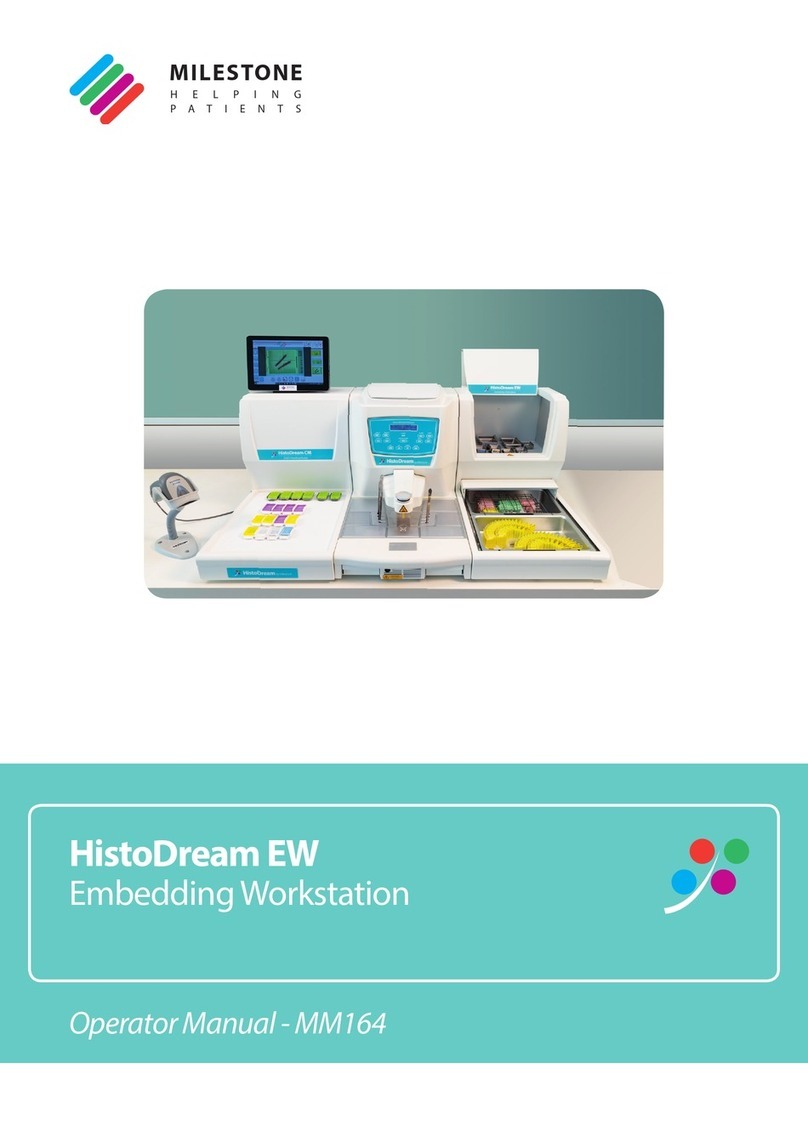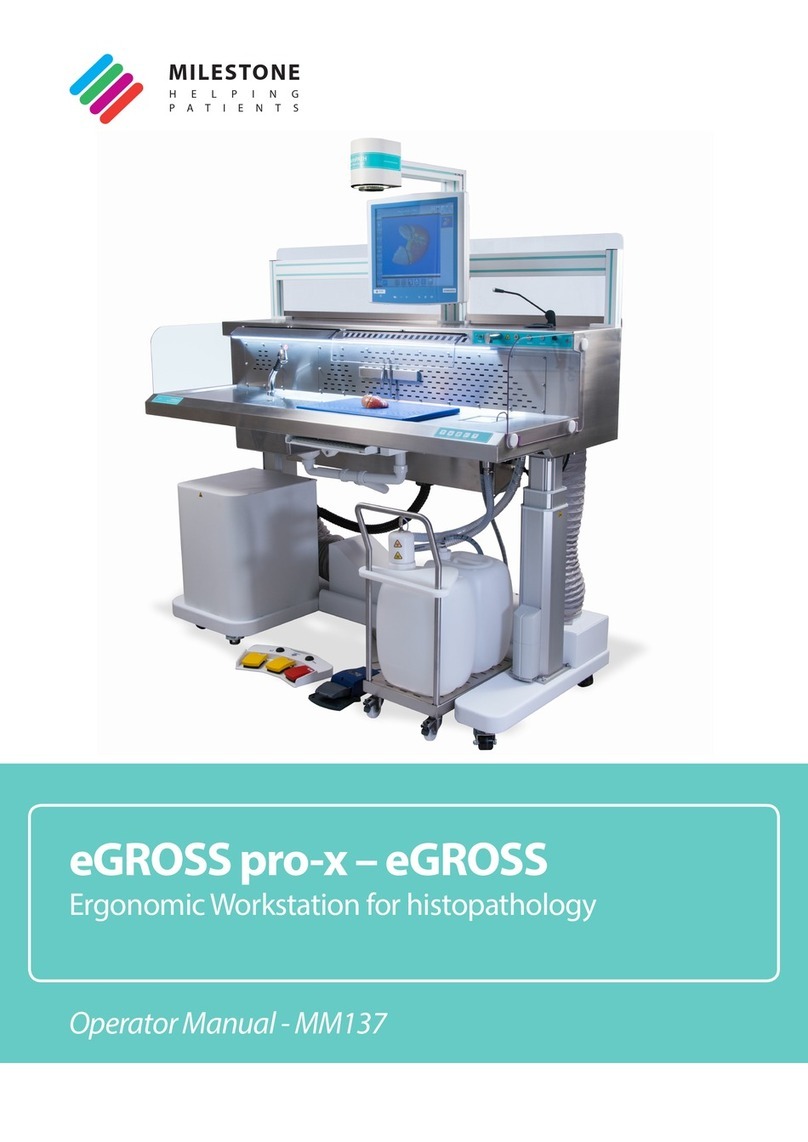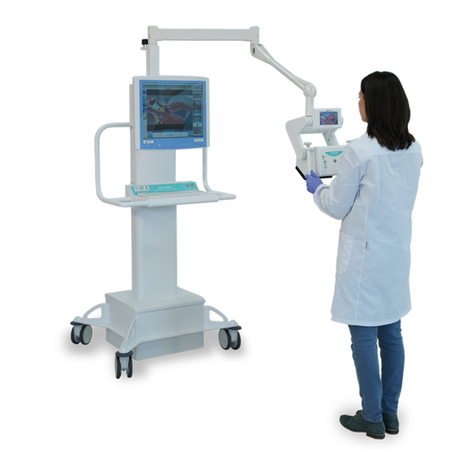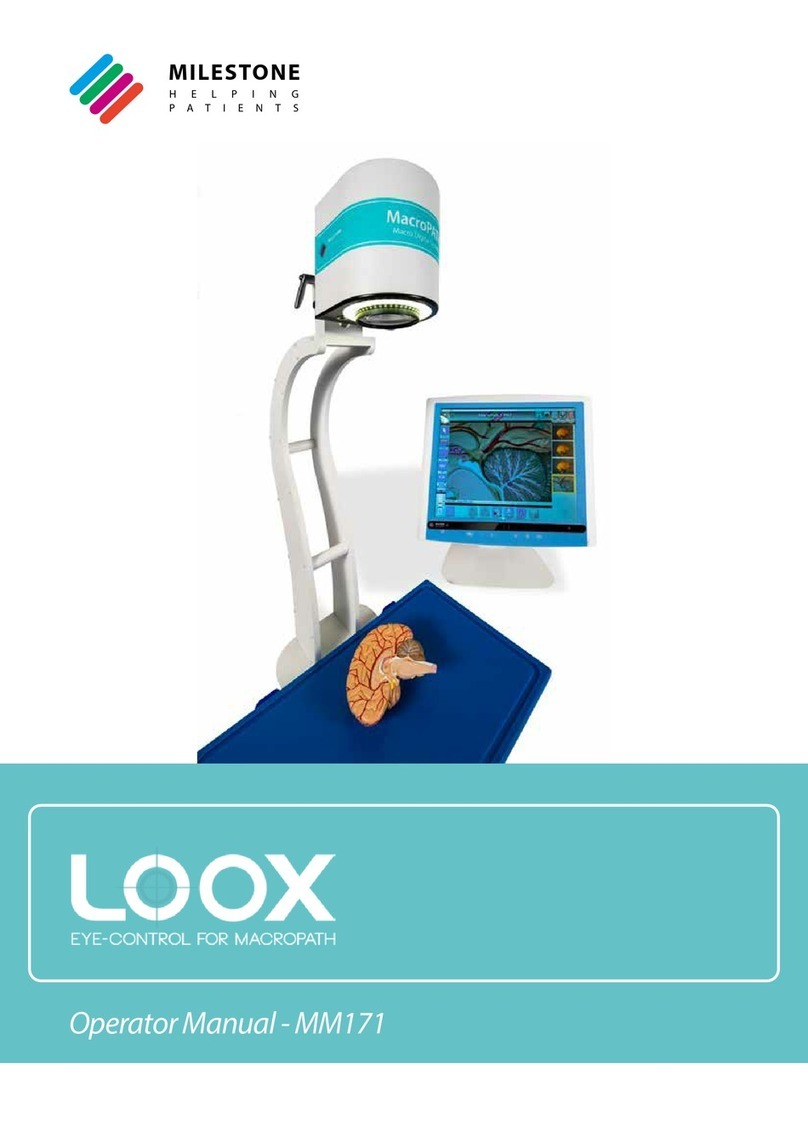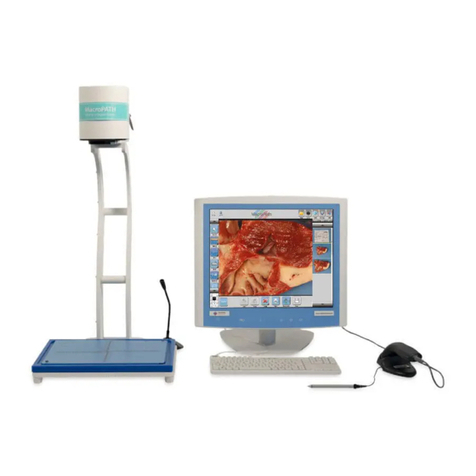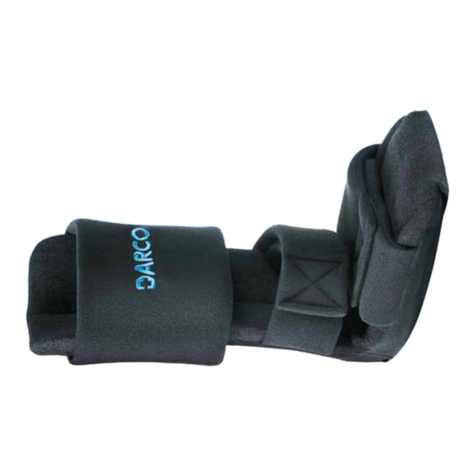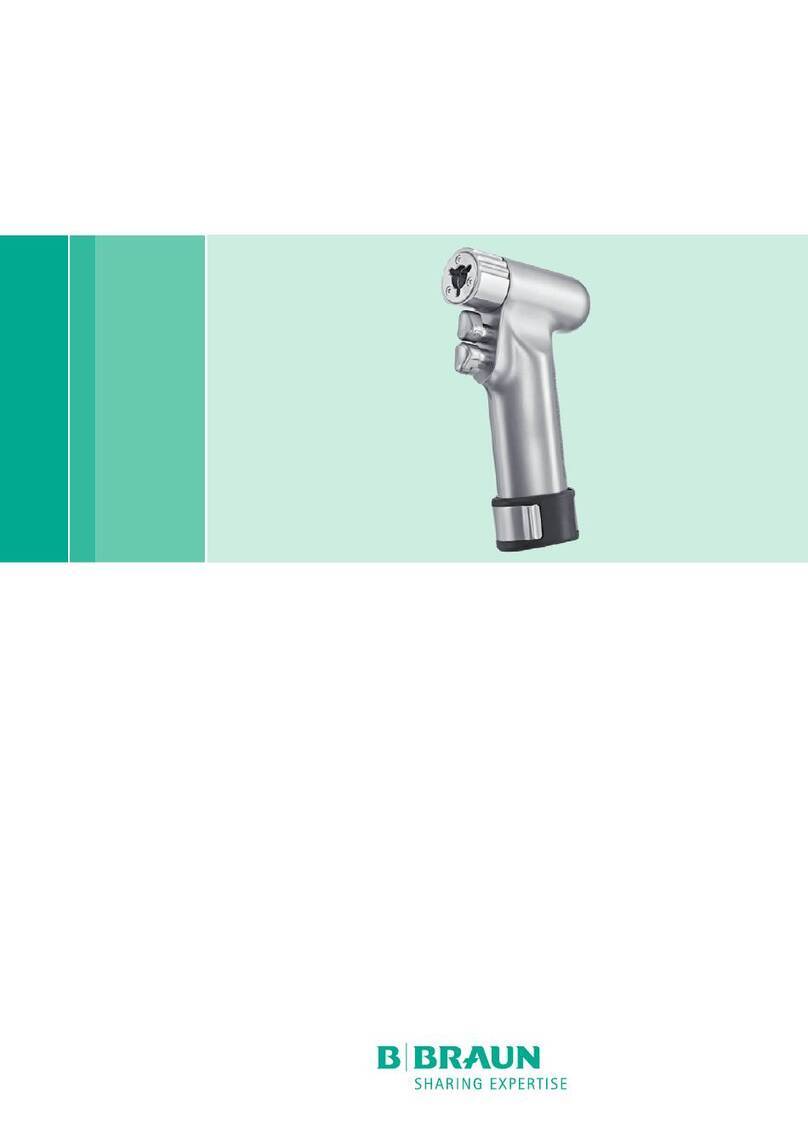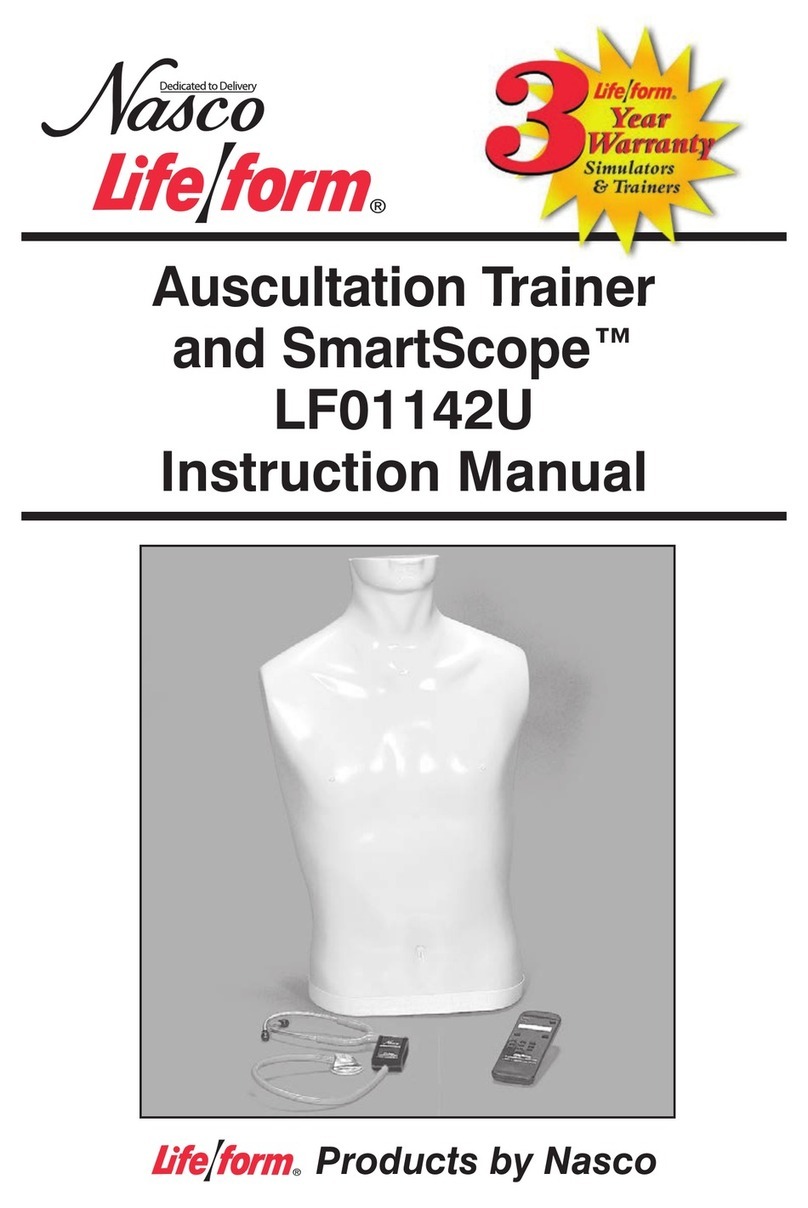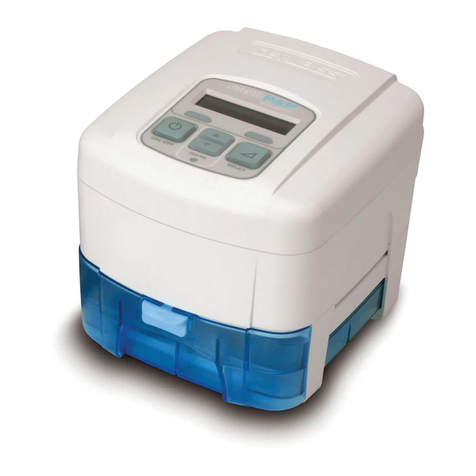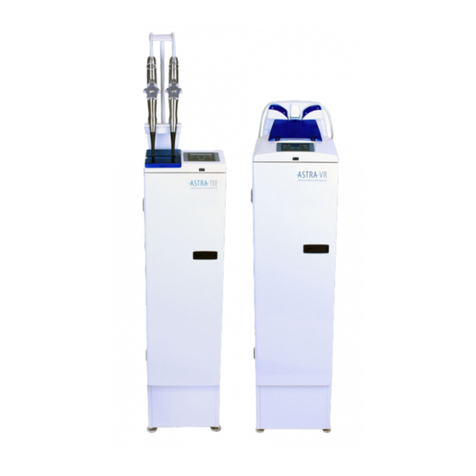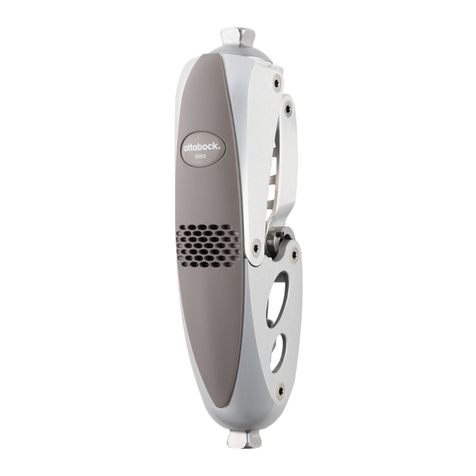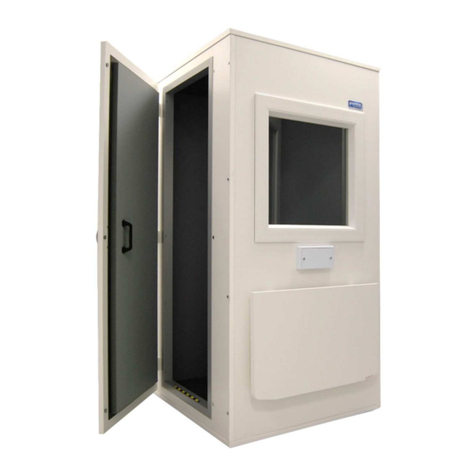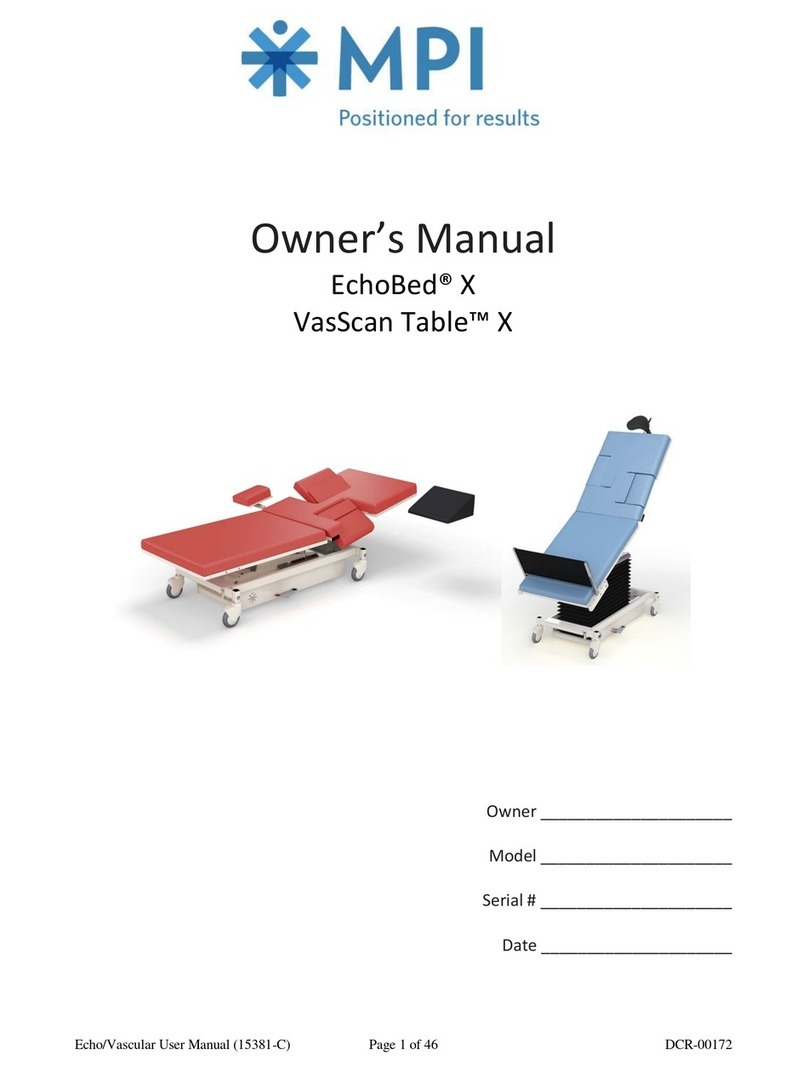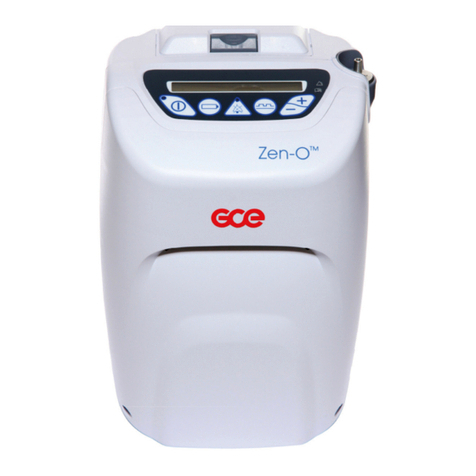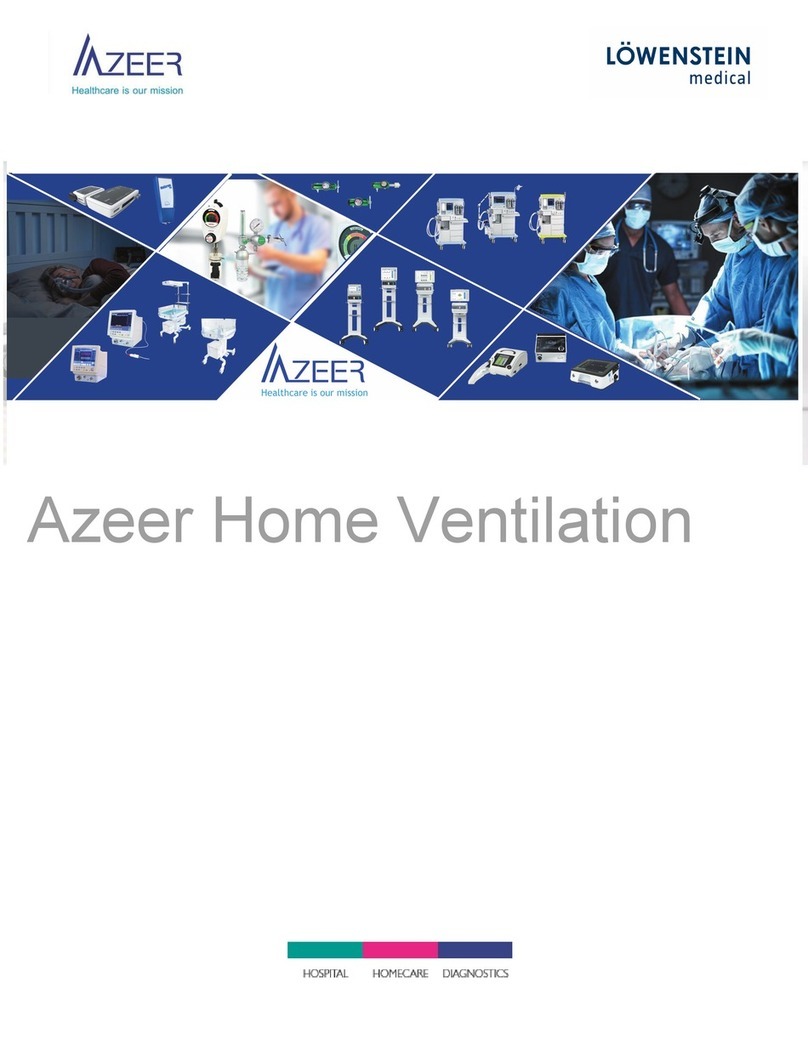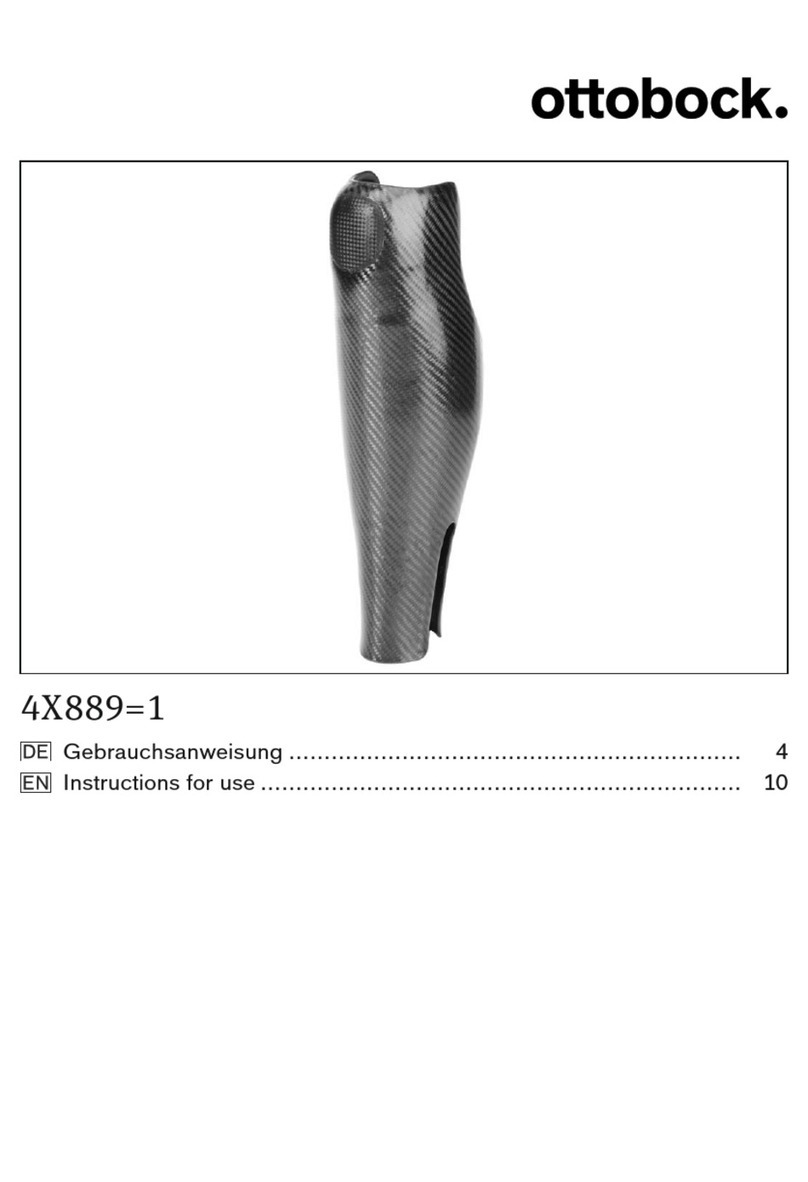Milestone STA User manual

STA™Single Tooth Anesthesia System
Featuring the Wand Handpiece

Caution: Federal law restricts this device to sale by or on the order of a
dentist or physician.
MEDICAL USE:
This device is intended for use only in subcutaneous or intramuscular
injections of local anesthetic agents for dental applications. It should not
be used for intravascular (IV) or other routes of administration. This device
should be used only by practitioners who are familiar with, and observe
applicable labeling regarding the use of local anesthetic agents for dental
applications.
The STA system senses real time relative interstitial pressures at the tip of
the needle.
The STA system facilitates the targeting of the intraligamentary space.
Milestone Customer Care
If there are any questions or you need assistance, please call us
immediately toll-free at:
USA Milestone Scientific EU PDS Ltd.
220 South Orange Avenue Nottingham, UK
Livingston, NJ 07039 NG1 1GF
1-800-862-1125 +44 (0) 115-912-4277

CONTENTS
INTRODUCTION
FEATURES
I Basic Operation
Basic Operation
The STA Handpieces
STA Wand™
One Handed Needle Recapping Technique
SafetyWand™
Warnings and Cautions
Basic Modes of Operation
Foot Control Operation
Cruise Control Function
Manual Purge and AutoPurge™
Multi-Cartridge Feature
Plunger Operation
Removal of Cartridge
Aspiration
Cartridge Volume Gauge and Audible Cartridge Tone Indicator
Dynamic Pressure Sensing™Technology
STA-Intraligamentary Injection
Dosage Volume
Training Mode
Global Default Settings
II Maintenance and Care
III Advanced Operation
IV Clinical Techniques
Traditional
Inferior Aveolar
AMSA
P-ASA
PDL
STA-Intraligamentary
V Additional Information
Warranty Information
Product Safety Information

INTRODUCTION
Introduction to STA™ System featuring the STA Wand™ handpiece
Congratulations on purchasing your new STA Single Tooth Anesthesia computer
controlled local anesthetic delivery system (CCLADS). The STA System is a state of the
art device which facilitates a wide variety of anesthetic injections, including palatals and
STA-Intraligamentary Injections, consistently and comfortably to your patients.
The STA System is the only local anesthetic delivery system that incorporates Dynamic
Pressure Sensing Technology™ (DPS). DPS technology is a revolutionary technology
developed by Milestone Scientific Inc. that allows dental professionals to perform
successful and predictable single tooth anesthesia techniques using the STA-
Intraligamentary Injection. This technique is detailed within the manual.
Please take the time to familiarize yourself with the STA System by reading the manual.
You should also practice a few injections at the “bench” to familiarize yourself with the
system.
We hope that your new STA System provides many years of successful service to you
and to your patients. If you have any questions or comments, please call Milestone
Scientific Inc. at 1-800-862-1125.
- 1 -

FEATURES
Auto Purge/Retract
Controls plunger operation. Hold
to Retract, withdraws plunger
│
│
▼
Volume Indicator ──►
Shows amount of
anesthetic remaining
◄──
◄── Multi-cartridge
Controls automatic purging
Cycle. Hold to Train, activates
Training mode.
Pressure Indicator ──►
STA Button ──────►
Deactivates Single Tooth
Anesthesia mode with
Dynamic Pressure Sensing
technology
◄─── Select Button
Activates either normal
mode with a speed or
Turbo mode with 3
speeds
Aspirate ──►
Turns aspiration function
On/Off
◄───Volume
Controls all audible
Volume in the device
- 2 -

FEATURES
-3-

BASIC
OPERATION
OPERATION
Set Up
Connect foot control hose to front outlet on drive unit. Hand-tighten snugly.
Position drive unit on a flat, level surface within 3’ of patient. (The STA Wand™
hand-piece micro tubing is 5’ long from the drive unit to the handpiece.)
Plug the drive unit electrical cord into the back of the unit and then to a power
outlet. Place the STA System and power cord in an accessible location such that
in case of emergency, the unit may be powered down or unplugged quickly.
Note: Do not place STA™unit within 12 inches of other electrical devices such
as electro-surgery units as they may cause interference.
Warning: There may be possible safety hazards associated with the
external radiofrequency interference (RFI) or electromagnetic radiation
which may affect the safe operation of this device and therefore should be
avoided.
Power ‘On/Off’
Press power switch on the back of the drive unit to turn system power ‘On’ and
‘Off’. Plunger will automatically retract to ‘down’ position when unit is turned ‘On’.
When first turned on the STA is set to the default modes.
STA Handpieces
Two types of handpieces are available for the STA System. The STA Wand™
hand-piece and the SafetyWand™handpiece with safety engineered sharps
protection to aid in the prevention of needlesticks. Specific instructions for each
version of the handpiece are provided in the following sections.
Note: Only use handpieces, needles and other components with the STA
System that are manufactured or recommended by Milestone Scientific.
- 4 -

BASIC
OPERATION
STA Wand™
Product Description
The STA Wand™handpiece is shaped to allow a pen-type grasp for accurate
needle insertions. However, the handpiece can be broken to create a short,
easily controlled needle handle for injections into tight areas. (See illustration)
Fig. 1
OPERATION:
Familiarize yourself with the operation of the STA Wand™by practicing with the
device prior to clinical use.
1. Turn drive unit on.
2. Remove a needle from the sterile packaging. Maintain sterility.
3. Hold the STA Wand™handpiece firmly. Place the needle into the open
end of the handpiece and rotate needle. It is critical that the needle is
firmly secured to the handpiece.
Note: The STA handpiece is also available with a selection of needles that are
pre-attached and bonded to the handpiece. The handpiece equipped with
the 30 gauge ½ inch needle is optimized for the STA-Intraligamentary
injections. Contact your dealer for availability.
4. Slide the diaphragm end of cartridge (with metal band) into cartridge
holder, push cartridge firmly and completely into the holder until you feel
the spike penetrate the rubber diaphragm.
5. Place open, flange end of cartridge holder into the cartridge holder socket
on top of the unit, and rotate counter-clockwise 1/4 turn.
6. After attaching the cartridge holder to the drive unit, the STA unit will
automatically purge the air from the tubing and needle. The handpiece is
now primed and ready for use.
Warning: The flow rate during the prime/bolus cycle is 0.0691 ml/second.
The maximum pressure alarm is disabled during the priming (i.e., purge)
phase. The alarm is re-enabled immediately following this operation.
- 5 -

*-
BASIC
OPERATION
Note: If you experience difficulty puncturing a cartridge it may be due to
variations in the rubber diaphragm material. Try these four solutions to
correct the situation:
Place the cartridge into the holder; gently rotate the cartridge stopper
360 degrees against the spike two or three times. Then press firmly
into the holder, puncturing the cartridge. A slight twisting motion as
you press may also help puncture the cartridge.
Place cartridge into cartridge holder. Place cartridge against a firm
surface or counter top and press quickly and firmly down.
Swab rubber diaphragm with alcohol which acts as a lubricant.
Place the cartridge into the holder. Press firmly against spike,
stretching the rubber diaphragm for 5-6 seconds. Release and
immediately re-push rapidly and firmly against the spike.
One Handed Needle Recapping Technique
1. After the needle is attached to the handpiece, place the needle cap into wand
holder on either side of the STA unit.
2. Hold needle cap firmly with one hand, remove the needle from the cap
with the other hand by pulling straight out from the cap. Do not twist. (Cap
remains in receptacle on the side of the unit).
3. Between injections, lightly set the needle back into the cap. Do not press
into the cap. This is a temporary holding dock for the needle.
4. When ready to use the handpiece and needle, simply remove the
handpiece and needle from the cap. Return the needle to the cap when
not in use.
5. When the procedure is completed, firmly press the needle into the cap on
the side of STA unit, locking the cap back on the needle. When locked in
place and keeping your hands behind needle point, remove the cap with
the attached needle from the unit and discard in an approved manner.
Note: Recap needle when medically necessary or when no other alternative
exists. - 6 –

BASIC
OPERATION
SafetyWand™
Product Description
The SafetyWand™(Fig. 3) handpiece is designed with safety engineered sharps
protection to aid in the prevention of needlesticks.
Fig. 3
OPERATION:
The operation of the SafetyWand™control tab requires only a gentle and
gradual motion to engage or release the control tab which protracts and retracts
the needle. Familiarize yourself with this operation by practicing with the device
prior to clinical use.
To Protract:
Depress the back portion of the CONTROL TAB and slide forward to fully
protracted position. (See illustration)
Fig. 4
- 7 -

BASIC
OPERATION
To Lock:
Once in the fully protracted position,
depress the forward portion of the
CONTROL TAB to lock.
To Unlock:
Depress the back portion of the
CONTROL TAB and release.
Fig. 5
Fig. 6
Preparation:
1. Turn drive unit on.
2. Remove the sterile SafetyWand™handpiece from package. Maintain
sterility.
3. Attach the needle:
a. Hold the SafetyWand™in one hand.
b. Attach a standard luer lock needle by depressing the back portion
of the control tab and by sliding it forward. To lock in the protracted
position, slide control tab forward and depress the forward portion
of control tab.
c. While securely holding the SafetyWand™, place the end of a
standard luer lock needle into the open end of the SafetyWand™
and rotate until firmly secure.
d. Place the handpiece on the side of the drive unit when not in use.
Once secured, retract the needle by depressing the back portion of
the control tab and pull handpiece straight out of cap. Do not twist.
(Cap remains in the receptacle on side of unit.) While not in
use, replace the retracted handpiece onto the cap on the side of the
drive unit.
4. Load the anesthetic into the SafetyWand™and attach the cartridge holder
to the drive unit by twisting the holder counter-clockwise approximately ¼
turn in the STA drive unit. The STA will automatically purge the air from
the tubing and needle. The handpiece is now primed and ready for use.
- 8 -

BASIC
OPERATION
Directions for SafetyWand™ Use:
1. Remove the handpiece (with attached needle) from the cap on side of the
drive unit. Protract the needle by depressing the back portion of the
control tab, gently sliding it forward all the way (Fig. 7), and depressing the
forward portion of control tab to lock into the protracted position (Fig. 8).
The control tab becomes “self-locked” into the protracted position.
Perform the injection.
Fig. 7 Fig. 8
2. To retract the needle using one hand, depress the back portion of
control tab with your finger or thumb. This will automatically retract the
needle into the safety position. You will hear and see the control tab and
needle “lock” in the retracted safety position (Fig. 9, 10).
To Retract: Fig. 9
Fig. 10
- 9 -

BASIC
OPERATION
Auto-retraction:
The needle will automatically retract when released from the protracted position.
3. Place the handpiece on the side of the drive unit when not in use. While
still in the retracted state and using the needle cap as a guide, slide the
handpiece into the cap on the side of the drive unit.
Disposal:
1. After last injection, withdraw needle from tissue and retract into the back
position.
2. Press down firmly on the front end of the control tab with your thumb-nail
and push it into the sleeve
3. Press hard enough to make the forward portion of the control tab “break-
through”, lodging itself into the sleeve. This will prevent the handpiece
from protracting.
Fig. 11
4. Directly discard in an approved manner, e.g., a sharps container.
CAUTION: Do not use with needles longer than 1.25 inches with the
SafetyWand™.
CAUTION: Maintain sterile conditions.
- 10 -

BASIC
OPERATION
WARNINGS:
Single Use ONLY:
The STA Wand™/SafetyWand™/ handpiece and tubing assembly, as with any
syringe, opens a fluid pathway directly to the patient. This device is for single
use only. It must not be re-sterilized and must not be used on successive
patients or the same patient at a later visit. Reusing The STA Wand™
/SafetyWand™handpiece places the patient at risk. The anesthetic cartridge
must not be reused on multiple patients.
Do not bend needle during use:
Deformed or bent needles may interfere with the proper operation of the STA
Wand™/SafetyWand™
Lubricate the “O” Ring and Plunger:
A properly maintained and lubricated ‘O’ Ring is necessary for effective
functioning of the system. The following procedure is recommended:
a. Check ‘O’ Ring for cracks, deterioration, or lack of lubrication daily
b. If cracked or deteriorated, replace at once.
c. If dry, lubricate with silicon gel. While plunger is extended, lightly
lubricate plunger shaft with silicon gel. This will enhance smooth
performance.
STERILE, unless individual plastic package is opened or damaged.
CAUTIONS:
-Do not use the SafetyWand™with needles longer than 1.25 inches
-Federal law restricts this device to sale by or on the order of a physician or
dentist.
-Maintain sterile conditions.
- 11 -

BASIC
OPERATION
Basic Modes of Operation
The STA System is equipped with three basic modes of operation. They are:
1. STA mode, which has a single anesthetic injection flow rate. This mode
is activated when the unit is turned on.
2. Normal mode, which has 2 anesthetic injection flow rates.
3. Turbo mode, which has 3 anesthetic injection flow rates.
The user may change between modes during any procedure and the selection is
retained while cartridges are replaced. When the STA System is turned off and
then back on, the default setting is the STA mode.
STA Mode: Provides the user with real-time Dynamic Pressure Sensing (DPS™)
technology while injecting using the ControlFlo™rate. Aspiration default is set to
“ON” and can be changed by the user.
Normal Mode: In this mode the system has two flow rates, ControlFlo™and
RapidFlo™. The DPS™(See section on DPS technology) pressure sensing
technology is not activated. Aspiration is set to “On” and can be changed to “Off”
by the user.
Turbo Mode: The Turbo mode provides the user with an additional speed,
TurboFlo™; all three speeds are controlled by the foot-control pedal. Aspiration
is set to “On” and can be changed to “Off” by the user.
- 12 –

BASIC
OPERATION
Foot Control Operation
The foot control supplied with the STA System is an air activated switch. Slight
pressure = ControlFlo™(1 cc per 207 seconds). Modest pressure = RapidFlo™(1
cc per 35 seconds). When selected, additional pressure engages TurboFlo™.
The TurboFlo™(1 cc per 17 seconds) delivers the anesthetic solution 2 times
faster than RapidFlo™and must be used with extreme care.
Warning: ControlFlo™is the only rate that should be used when
performing Palatal and STA-Intraligamentary injections. RapidFlo™and
TurboFlo™should never be used for these injections as they can result in
pain and tissue damage.
IMPORTANT: ControlFlo™should be used at the beginning of ALL injection
techniques. It provides a controlled and safe administration that normally results
in little or no discomfort. Once initial “numbness” has occurred you may decide
to switch to a more rapid rate, i.e. RapidFlo™or TurboFlo™during infiltration
injections and Inferior Alveolar block injections. Typically ¼ of the cartridge
should be administered using the ControlFlo™rate before switching to a more
rapid rate of delivery.
TurboFlo™is intended to be used only after initial anesthesia (numbing) has
occurred for the Inferior Alveolar Nerve Block Injection or a Supraperiosteal
Infiltration Injection. The oral tissues that are affected by these injections are
composed of loose, elastic tissues that can accommodate this rapid rate:
however, caution should always be used, and operator judgment is critical to
performing a safe and effective injection.
Always be certain that the foot control hose is firmly attached to the unit. Any air
leaks will degrade the operation. Practice using the foot control to become
comfortable with the operation and pressure required to activate the various
delivery rates.
- 13 -

BASIC
OPERATION
Cruise Control Function
This feature allows the operator to engage the ControlFlo™without continuously
depressing the foot control. This feature is available in the Normal, Turbo and the
STA settings.
To use Cruise Control:
1. Begin ControlFlo™. Listen to beeps.
2. After 4 beeps a voice will say CRUISE. This opens a 5 second window
during which you can activate the cruise control.
3. Immediately remove foot from foot control. Cruise control is engaged and
a voice will say SET.
4. If you do not want to engage cruise control, do not remove foot from foot
control during this window.
5. To disengage cruise control, depress foot control and release or press
firmly for faster speeds.
- 14 -

BASIC
OPERATION
Manual Purge and AutoPurge™
Prior to making any injection, all of the air should be “purged” from the
microtubing and from the needle.
AutoPurge™Operation
The STA System can automatically purge with the AutoPurge™ feature. When
enabled, each time a new cartridge is attached to the drive unit the plunger
automatically advances, moving the anesthetic through the tubing to purge the
air from the system. A small amount of anesthetic can be observed at the end of
the needle following a successful purge. The unit is preset at the factory to use
AutoPurge™as the default.
To Use AutoPurge™
1. Load and attach a cartridge holder to the drive unit, twisting it ¼ turn
counter-clockwise.
2. The plunger will automatically advance. This will expel the air from the
tubing and from the needle. A small droplet of anesthetic at the tip of the
needle indicates a successful purging.
3. The Anesthetic Solution Volume Gauge will now be illuminated to FULL,
indicating the unit is ready to use.
Manual Purge Operation
If the operator desires not to use the AutoPurge™, it can be turned off, activating
the manual purge function. To manually purge the system, press the
AutoPurge™button, indicator light is now turned off and the air is NOT
automatically purged from the tubing. Depress the foot pedal at which time the
drive unit automatically extends the plunger a preset distance to purge air from
the micro tubing and the needle.
- 15 -

BASIC
OPERATION
Multi-Cartridge Feature
This function is useful when a second or third cartridge is required during a single
procedure using the same disposable STA Wand™and there is no need to
purge air from the handpiece and tubing as it was previously purged. This
operation will save unnecessary loss of anesthetic solution when using more
than one cartridge.
1. While the STA plunger is completely retracted, press the Multi-Cartridge
button. Indicator light will illuminate ON.
2. Remove the empty cartridge and replace with a new full cartridge. Insert
cartridge holder onto unit. (The device will NOT purge itself).
3 Continue injection.
4. STA will default back to Multi-Cartridge OFF mode following the end of the
injection. The Multi-cartridge mode will turn off automatically after 60
seconds if a new cartridge is not attached to the drive unit.
- 16 -

BASIC
OPERATION
Plunger Operation
When the STA System is first turned on, the plunger retracts and parks in the
retracted position. Inserting the cartridge automatically engages the plunger and
purges the tubing. The system is ready when the indicator is illuminated,
showing a FULL volume.
As the plunger is extended dispensing anesthetic, the volume indicator light will
show the amount of anesthetic solution remaining in the cartridge. As the
plunger is fully extended, an audible warning beep is sounded. This indicates
that the cartridge is empty. When the cartridge is fully emptied or when the
cartridge holder is removed, the plunger will automatically retract into the drive
unit. If the Auto-Purge/Retract is not set, the plunger can be retracted by
pressing the Hold to Retract button.
Plunger Retraction
Retraction of the plunger can be performed using any of the following three
methods:
1. When the “Auto-Purge/Retract” feature is activated (noted by the illuminated
green LED on the front panel) the plunger will automatically retract when the
cartridge holder is removed from atop of the STA drive unit.
2. Manual retraction of the plunger. When the “Auto-Purge/Retract” feature is
not activated it is necessary to manually retract the plunger during use. This
is accomplished by depressing the multipurpose “Hold to Retract” button for
greater than 4 seconds.
3. Retraction of the plunger to the return “home” position will occur after the
plunger has fully expressed the content of an anesthetic cartridge. (This will
occur irrespective of the “AutoPurge/Retract” feature state and does not
require the removal of the cartridge holder from the STA drive unit.)
NOTE: To turn the “Auto-Purge/Retract” feature “On” and “Off” use the
multipurpose “Hold to Retract” button. You may toggle it “On/Off” by depressing
and releasing the button for less then 4 seconds.
Removal of Cartridge
Ensure plunger is fully retracted. Remove the cartridge
holder from the cartridge socket drive unit by rotating
cartridge holder clockwise 1/4 turn. Remove used cartridge
by pushing with finger placed into slots in side of holder. If
continuing injection procedure, remove and discard the
used cartridge and insert a new full cartridge into the
cartridge holder and continue.
Fig. 11
- 17 -
Table of contents
Other Milestone Medical Equipment manuals
Popular Medical Equipment manuals by other brands
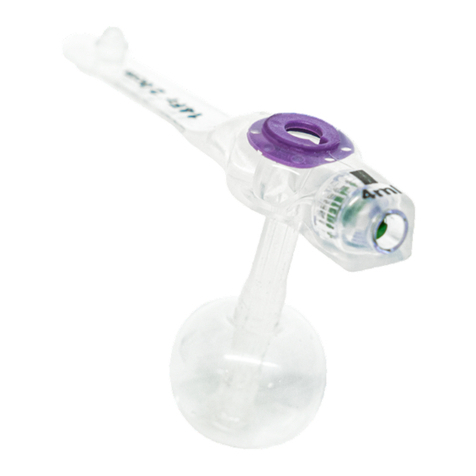
Compat
Compat Buddy Instructions for use
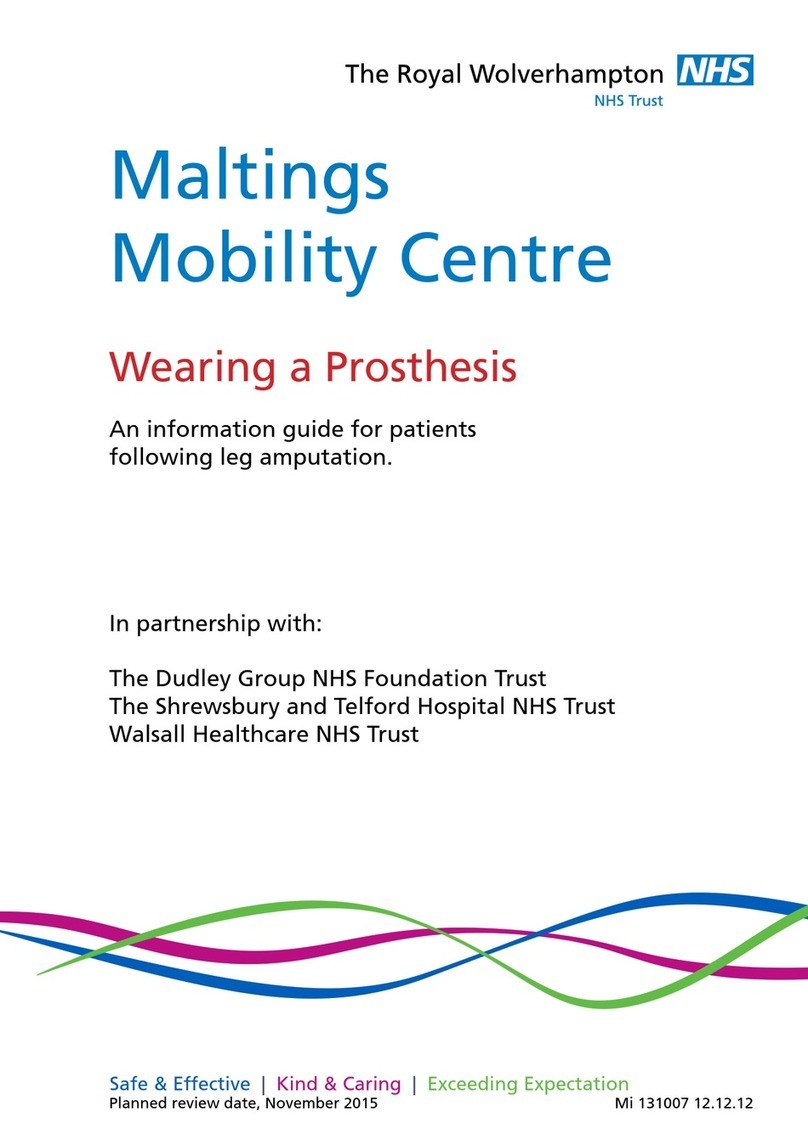
NHS
NHS Maltings user guide

Conair
Conair Theralief TN100 instruction manual

VitalGo
VitalGo VG-TLB 425V/T Assembly, Operating and Maintenance Instruction
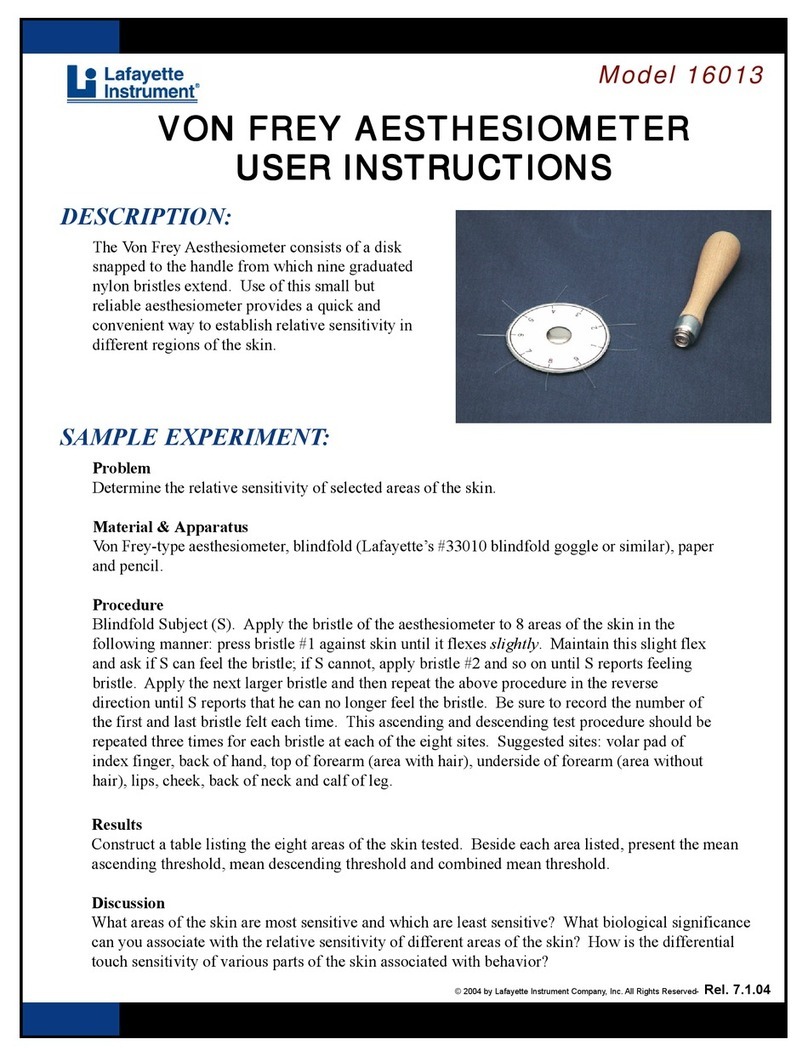
Lafayette Instrument
Lafayette Instrument 16013 User instructions

PFM Medical
PFM Medical ASEPT 3000 Instructions for use
